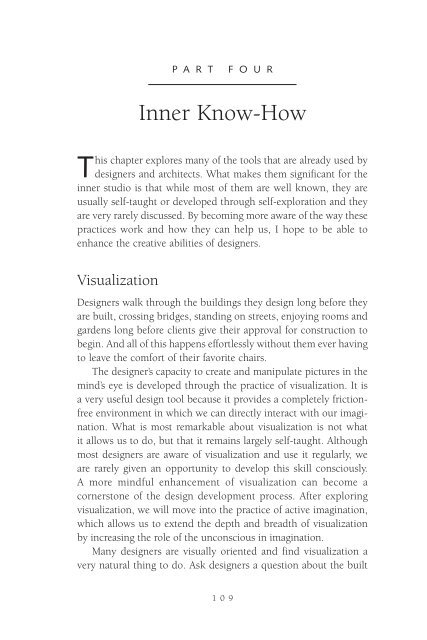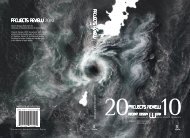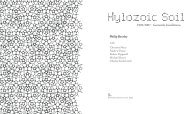The Inner Studio - Riverside Architectural Press
The Inner Studio - Riverside Architectural Press
The Inner Studio - Riverside Architectural Press
Create successful ePaper yourself
Turn your PDF publications into a flip-book with our unique Google optimized e-Paper software.
P A R T F O U R<br />
<strong>Inner</strong> Know-How<br />
This chapter explores many of the tools that are already used by<br />
designers and architects. What makes them significant for the<br />
inner studio is that while most of them are well known, they are<br />
usually self-taught or developed through self-exploration and they<br />
are very rarely discussed. By becoming more aware of the way these<br />
practices work and how they can help us, I hope to be able to<br />
enhance the creative abilities of designers.<br />
Visualization<br />
Designers walk through the buildings they design long before they<br />
are built, crossing bridges, standing on streets, enjoying rooms and<br />
gardens long before clients give their approval for construction to<br />
begin. And all of this happens effortlessly without them ever having<br />
to leave the comfort of their favorite chairs.<br />
<strong>The</strong> designer’s capacity to create and manipulate pictures in the<br />
mind’s eye is developed through the practice of visualization. It is<br />
a very useful design tool because it provides a completely frictionfree<br />
environment in which we can directly interact with our imagination.<br />
What is most remarkable about visualization is not what<br />
it allows us to do, but that it remains largely self-taught. Although<br />
most designers are aware of visualization and use it regularly, we<br />
are rarely given an opportunity to develop this skill consciously.<br />
A more mindful enhancement of visualization can become a<br />
cornerstone of the design development process. After exploring<br />
visualization, we will move into the practice of active imagination,<br />
which allows us to extend the depth and breadth of visualization<br />
by increasing the role of the unconscious in imagination.<br />
Many designers are visually oriented and find visualization a<br />
very natural thing to do. Ask designers a question about the built<br />
109





